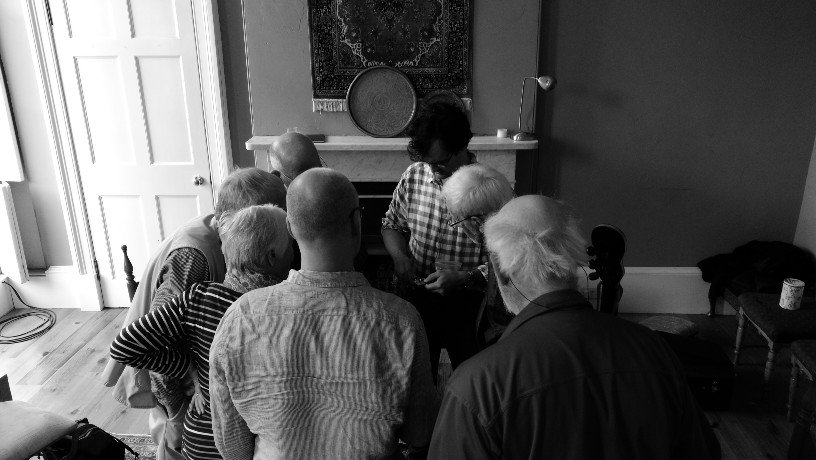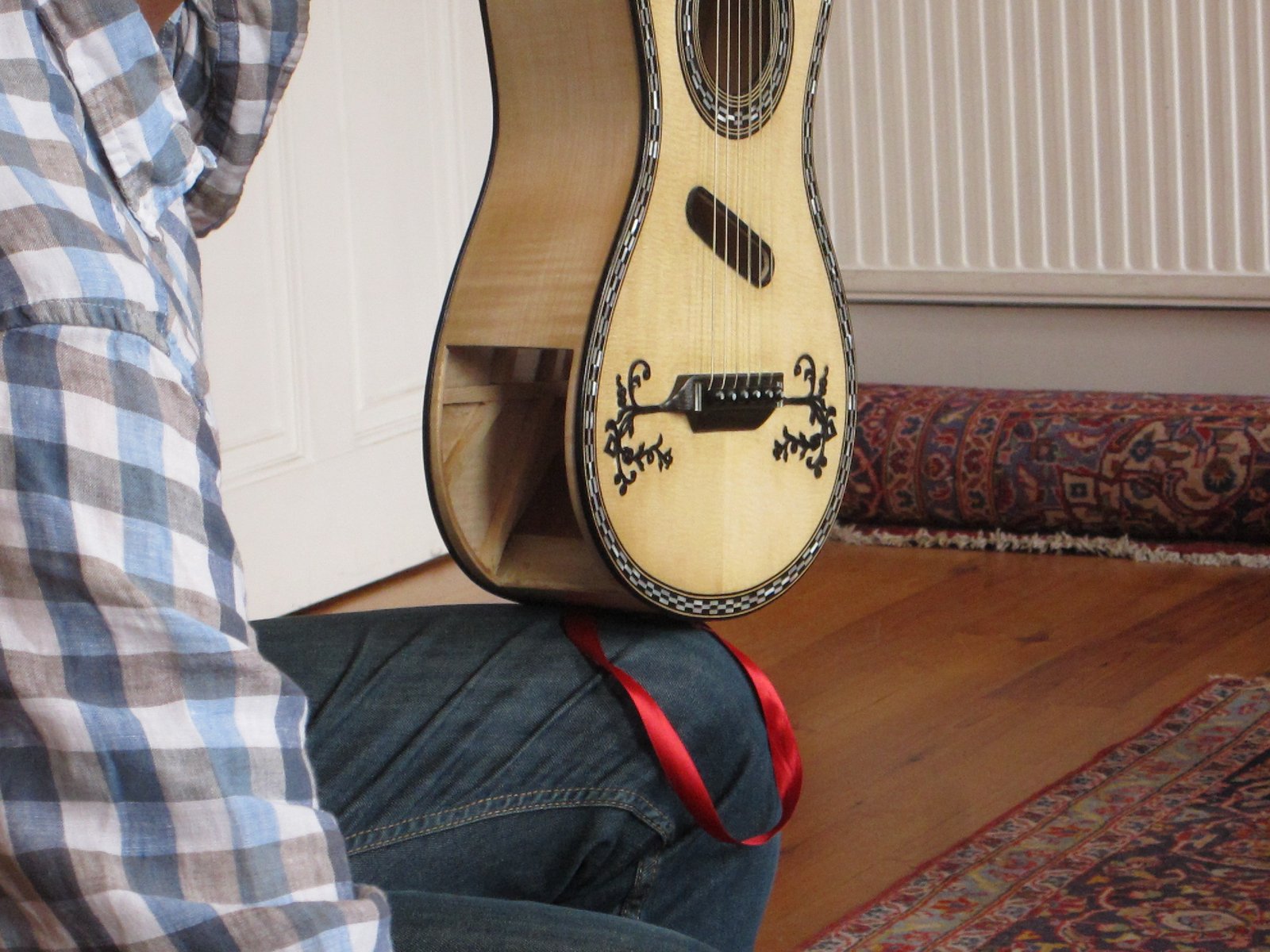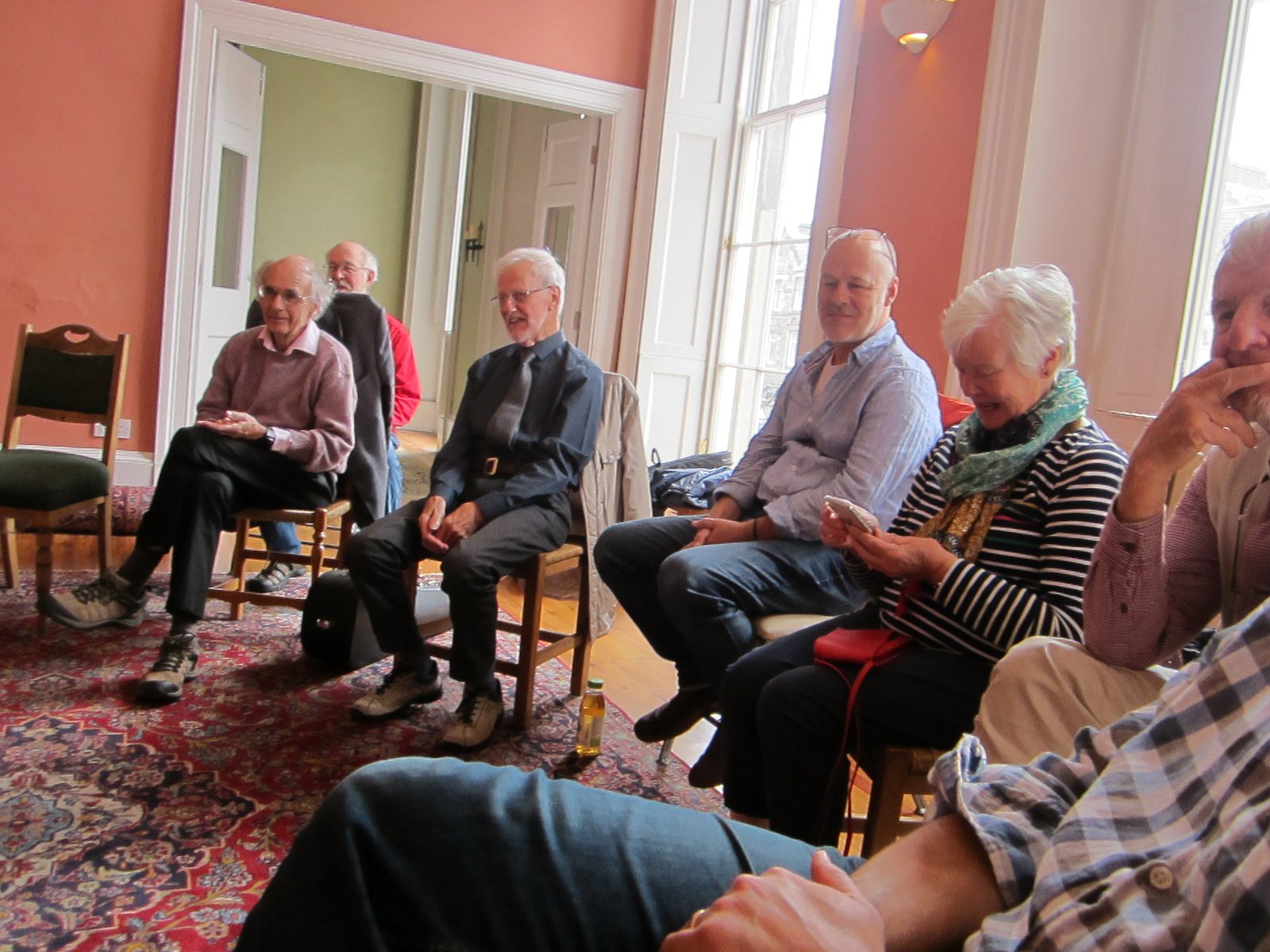Report of 31st Meeting: September 14th, 2019
Well, this was a very interesting meeting! Sorry you missed it 😉 Though maybe you didn’t 🙂
Bill Samson got the ball rolling with music in Renaissance tuning on his self-made 12c lute, the first to be made since the 17th century. It’s getting quite old itself now, though not yet a museum piece! And that goes for the performer too!
Bill gave a short history of the 12c, and “for a warmup” played What If A Day. Although not Bill’s best-sounding lute, it sounded clear enough, warm in the treble and transparent in the bass. He played with some stylistic flair, which got proceedings off to a good start. Suitably warmed up, he launched into an Almayne by Robert Johnson – I believe this was Johnson’s premier hearing for SLEGS, and very refreshing it sounded. The imitative passages and deft ornamentation were well received.
Rob MacKillop gave his debut performance playing a 7-string Viola da Gamba. Little did he know that its maker, Anthony Edge, was going to turn up to a SLEGS meeting for the first time. Anthony just happened to pop in, not knowing Rob was going to play his viol…
Rob gave a very short history of the viol, then proceeded to perform three student pieces, one by cellist, Joseph Reinagle (1762-1825), and two short dances by Joseph Bodin de Boismortier (1689-1755). Judging by comments given to the performer later, the instrument was very well received, with many comments about the tone of the instrument, and a few encouraging comments for the performer too. I’m sure Rob will bring the viol again, hopefully in tandem with a lute player.
SLEGS stalwart, Stuart McLuckie gave further evidence of his progress with three pieces from The Lute Society’s publication, 70 easy to Intermediate Pieces for Renaissance Lute: Ballad, Españoleta, and a Balletto.
These were all tastefully played and interpreted. The Españoleta was intriguing, with an opening so like those from Gaspar Sanz, before heading off into unfamiliar territory. I’d like to hear that again sometime. And encore of a French chanson rounded off a fine performance.
Eric Renshaw introduced his new instrument: a mandolin copied from an Embergher original. Embergher is the Stradivari of the mandolin world, and Eric’s instrument was clearly in the top class. Learn more about Eric’s mandolin world HERE and Embergher HERE. It is hope we will one day hear Eric play his beautiful mandolin.
Pav Verity treated us to some melodically and rhythmically fascinating Greek music on his Cretan Laouto. There could hardly have been a starker contrast to the quiet and warm lute music either side of Pav’s performance, but it was a sound clearly enjoyed by the audience!
Chris Jupp was up next, playing an 8c lute by Dallas Sutherland. Chris sensitively performed a beautifully-searching prelude by Laurencini Romanus – a composer worth hearing more of at future meetings. This fine performance was followed by a sublime Pavane by Alfonso Ferrabosco from the Variety of Lute Lessons of 1610. The tone and phrasing were exemplary, and an encore was demanded and granted: Dowland’s sublime Solos Cum Sola. Beautiful stuff, well appreciated.
Proceedings were brought to a close in a fascinating and unexpected way, with the presentation of a keyed classical guitar, carefully and beautifully reconstructed by PhD organology student, Daniel Wheeldon.
The instrument looks like a regular 19th-century guitar, but with a hole cut out of the soundboard, as if for inserting a pickup. Hidden in the side of the body is a keyboard attachment. The player presses a “piano” key, and a hammer rises from inside the guitar, through the hole, and strikes a string. Daniel demonstrated with some arpeggios, before playing a typical guitar study from the early to mid 19th century.
The guitar Daniel presented was a copy of an instrument made in 1810 by Mattias Neüner in Mittenwald. He is also building a copy of a guitar from 1843 by Mattius Sprenger and Franz Fiala. These are the only two keyed guitars known to survive.
How did it sound? Well, a bit percussive. Dynamic variation is possible, but not tonal. It therefore seemed more suited to Giuliani song accompaniments or less emotional solo pieces. I can’t imagine it at all being useful for the Romantic repertoire. The forte-piano came to mind. It wasn’t unattractive, but the right repertoire would have to be found in order to present it in a very positive light.
===
So, a fascinating meeting, much appreciated by all in attendance, including a lovely couple from far off Devon, Sue and Graham Hodgson. You are both welcome back for future meetings! Likewise the sprightly Anthony Edge!
Colour photos from Bill Samson, B&W from Rob MacKillop:























Hello Everyone,
I appreciate reading the Society news and seeing the photos your meetings. This month I especially appreciate Eric Renshaw’s links to his Mandolin Web Page. I play lutes, Wald Zither, mandolin, etc., and found a good deal of new music to play with my friends here in Michigan at his site. Scottish music is quite popular here and we have a large community of musicians to play it. Being retired, I am able to play every day of the week and some days at multiple locations. We also have many musical instrument builders in the vicinity.
Kindest regards to all,
George Arndt
________________________________
Hi George. Good to hear from you. If you are ever in Edinburgh…we would love to meet you. Nice to hear you are playing Scottish music – we should do that more often!
Rob MacKillop